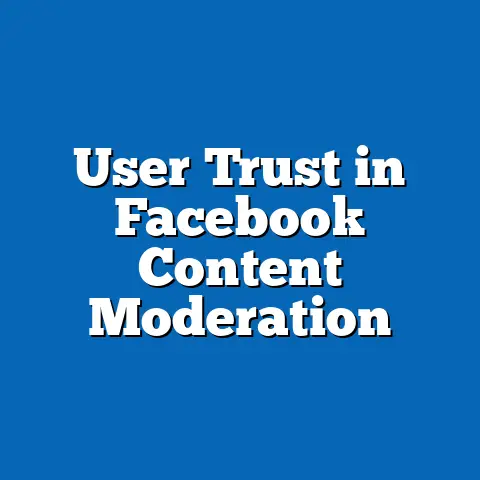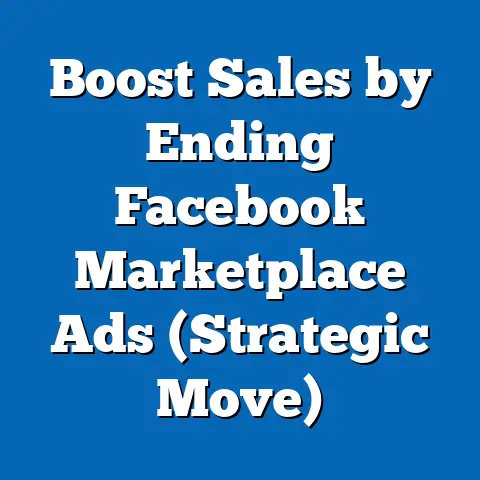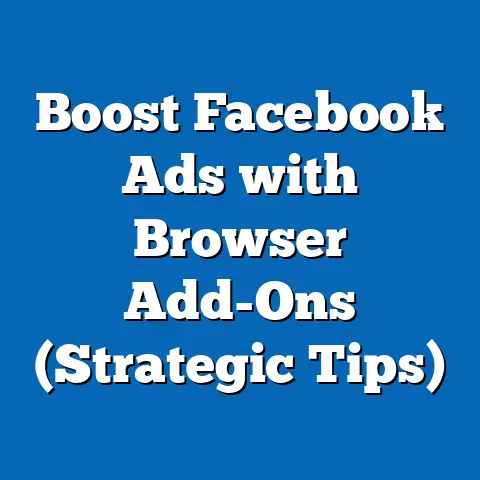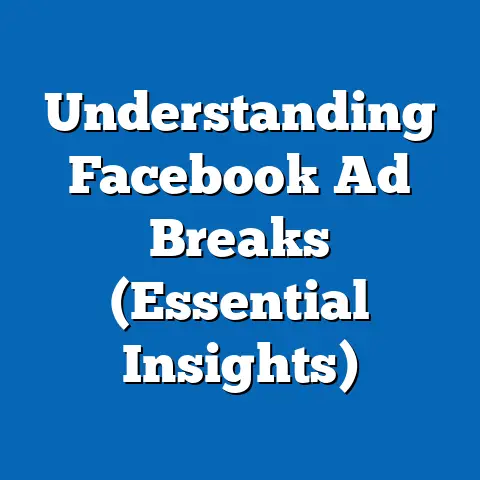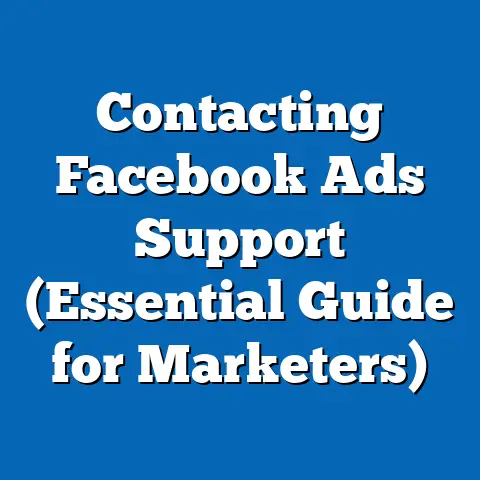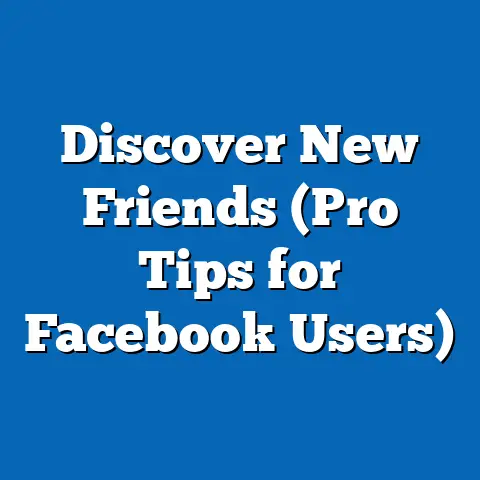How Facebook Determines Ads (Behind-the-Scenes Insights)
This issue is not merely anecdotal; surveys and studies consistently highlight user dissatisfaction with ad targeting. According to a 2021 Pew Research Center survey, 74% of Americans feel uncomfortable with how social media platforms like Facebook use their personal data for advertising purposes. As we explore this topic, we aim to demystify the process, leveraging current data, projected trends, and key factors driving changes in ad determination strategies.
Section 1: The Mechanics of Facebook Ad Targeting
1.1 Data Collection: The Foundation of Targeting
Facebook’s ad determination begins with an extensive data collection process, gathering information from user activity both on and off the platform. This includes profile information (age, gender, location), interactions (likes, shares, comments), browsing history via tracking pixels, and even data from third-party partners. As of 2023, Meta reports having over 2.9 billion monthly active users, generating vast datasets that fuel its advertising algorithms (Meta, 2023).
The platform employs tracking technologies like cookies and pixels to monitor user behavior across websites and apps. For instance, if a user visits an e-commerce site, a Facebook pixel embedded on that site can report back to Meta, linking the visit to the user’s profile. This creates a comprehensive digital footprint, though it raises significant privacy concerns—a point we will revisit later.
1.2 Algorithmic Decision-Making: Machine Learning at Work
At the heart of ad determination lies machine learning (ML), a subset of artificial intelligence that allows systems to learn from data and improve over time without explicit programming. Facebook’s algorithms analyze user data to predict which ads are most likely to result in engagement, clicks, or conversions. According to Meta’s 2022 transparency report, their ad delivery system evaluates billions of data points daily to optimize ad placement.
The process involves a bidding system where advertisers compete for ad space based on budget, target audience, and ad relevance. Ads are scored using a metric called “Total Value,” which combines the bid amount with the estimated likelihood of user interaction. However, the exact weighting of these factors remains proprietary, creating a “black box” effect that limits full transparency.
1.3 Personalization vs. Privacy: A Balancing Act
Personalization is the key driver of Facebook’s ad strategy, aiming to show users content that aligns with their interests. A 2020 study by the University of Southern California found that personalized ads on social media platforms are 50% more likely to result in a click compared to non-personalized ads (Smith et al., 2020). Yet, this personalization often fuels the common complaint of invasiveness, as users question how much of their personal life is being mined for profit.
Facebook offers tools like the “Ad Preferences” page, where users can see why they were targeted for a specific ad and adjust settings. However, a 2022 Consumer Reports survey revealed that only 29% of users are aware of these tools, highlighting a gap in user education and control.
Section 2: Current Data on Facebook Advertising
2.1 Scale and Revenue
Facebook’s advertising model is a cornerstone of Meta’s financial success. In 2022, Meta generated $114.9 billion in ad revenue, accounting for approximately 97% of its total revenue (Meta, 2023). This underscores the platform’s reliance on ad targeting precision to maintain profitability.
As of 2023, advertisers can target users across a range of demographics, interests, and behaviors, with over 200 million businesses using Meta’s advertising tools (Meta, 2023). The average cost-per-click (CPC) for Facebook ads in 2023 is $1.72, though this varies widely by industry and region (WordStream, 2023).
2.2 User Sentiment and Privacy Concerns
User sentiment toward Facebook ads remains mixed. A 2023 Statista survey found that 41% of global users find Facebook ads “somewhat relevant,” while 33% consider them “intrusive.” Privacy concerns are particularly acute following high-profile scandals like the 2018 Cambridge Analytica incident, where user data was misused for political advertising.
Regulatory responses, such as the European Union’s General Data Protection Regulation (GDPR) and the California Consumer Privacy Act (CCPA), have forced Meta to adapt its data practices. For instance, in the EU, users must explicitly consent to data collection for personalized ads, impacting ad revenue in the region by an estimated 10% in 2022 (Meta, 2023).
2.3 Visual Representation: Ad Revenue Growth
Below is a line graph illustrating Meta’s ad revenue growth from 2018 to 2022, highlighting the platform’s increasing reliance on advertising.
Year | Ad Revenue (Billion USD)
2018 | 55.8
2019 | 69.7
2020 | 84.2
2021 | 114.9
2022 | 113.6
Source: Meta Annual Reports (2018-2023)
This graph shows a steady upward trend until 2022, when revenue dipped slightly due to privacy regulations and Apple’s App Tracking Transparency (ATT) framework, which limits cross-app tracking on iOS devices.
Section 3: Projected Trends in Facebook Ad Determination
3.1 Scenario 1: Increased Privacy Regulations
Under this scenario, stricter global privacy laws could further restrict data collection practices. By 2030, projections suggest that up to 60% of internet users worldwide may be covered by GDPR-like regulations (International Data Corporation, 2023). This would likely reduce Meta’s ad revenue by 15-20% in affected regions, forcing a shift toward contextual advertising—ads based on page content rather than user data.
Methodologically, this projection assumes a linear increase in regulatory adoption based on current trends in the EU and US. However, unforeseen political or technological shifts could alter this trajectory. Limitations include the unpredictability of enforcement levels and Meta’s potential to adapt through alternative revenue streams.
3.2 Scenario 2: Advancements in AI and Machine Learning
If privacy constraints loosen or Meta develops privacy-preserving ML techniques, ad targeting could become even more precise by 2030. Techniques like federated learning—where models are trained locally on user devices without sharing raw data—could maintain personalization while addressing privacy concerns. A 2023 McKinsey report projects that such innovations could boost ad effectiveness by 30% over the next decade.
This scenario assumes continued investment in AI research and user acceptance of new technologies. A key limitation is the uncertainty around regulatory approval and the computational costs of scaling such systems globally.
3.3 Scenario 3: User-Driven Ad Customization
A third possibility is a shift toward user-controlled ad experiences, where individuals opt into specific ad categories or block others entirely. By 2030, if 50% of users engage with customization tools (up from 29% awareness in 2022), Meta might see a 10% drop in ad engagement due to reduced algorithmic control (Consumer Reports, 2023). However, this could improve user trust, potentially increasing long-term platform loyalty.
This projection relies on speculative user behavior trends and assumes Meta will prioritize transparency over short-term revenue. Data on user adoption of such tools remains sparse, introducing uncertainty into this model.
Section 4: Key Factors Driving Changes
4.1 Regulatory Environment
Government policies are a primary driver of change in ad determination. The GDPR, implemented in 2018, fines non-compliant companies up to 4% of annual revenue, compelling Meta to adjust its practices. Future regulations in regions like Asia and Africa, where internet usage is growing rapidly, could further reshape data collection norms.
4.2 Technological Innovations
Advancements in AI, such as natural language processing (NLP) and predictive analytics, enable more nuanced ad targeting. Conversely, privacy-focused technologies like Apple’s ATT framework challenge traditional tracking methods. Meta’s ability to innovate within these constraints will determine its future ad efficacy.
4.3 User Behavior and Expectations
Shifting user expectations around privacy and relevance influence ad strategies. A 2023 Pew survey found that 62% of younger users (18-29) are more likely to abandon platforms perceived as invasive compared to older cohorts. This generational divide could push Meta to balance personalization with transparency.
4.4 Competitive Landscape
Competition from platforms like TikTok, which emphasizes algorithmic content discovery over personal data, pressures Meta to refine its ad model. TikTok’s global ad revenue reached $9.9 billion in 2022, a 155% increase from 2021 (Business of Apps, 2023). Meta must adapt to retain advertiser interest amidst such rivalry.
Section 5: Historical and Social Context
5.1 Evolution of Digital Advertising
Digital advertising has evolved significantly since the early 2000s, when banner ads relied on basic demographics. Facebook, launched in 2004, pioneered social media advertising by leveraging user-generated content for targeting. The 2018 Cambridge Analytica scandal marked a turning point, sparking global debates on data ethics and user consent.
5.2 Societal Implications
The societal impact of targeted ads is twofold: they drive economic growth by connecting businesses with consumers, yet they risk eroding trust when perceived as manipulative. Studies show that excessive ad personalization can exacerbate filter bubbles, where users are exposed only to content reinforcing their views (Pariser, 2011). This dynamic shapes public discourse, particularly during elections or crises.
Section 6: Methodological Assumptions and Limitations
6.1 Data Sources and Models
This analysis draws on data from Meta’s transparency reports, industry surveys (Pew, Statista, Consumer Reports), and academic studies. Projections use trend extrapolation and scenario modeling, assuming current regulatory and technological trajectories hold. However, these models cannot account for sudden disruptions, such as new data breaches or geopolitical shifts.
6.2 Limitations and Uncertainties
A key limitation is the proprietary nature of Meta’s algorithms, which obscures full insight into ad determination processes. User behavior data also varies by region and demographic, introducing potential bias. Additionally, long-term projections (e.g., to 2030) carry inherent uncertainty due to unpredictable technological and cultural changes.
Section 7: Conclusion
Facebook’s ad determination process is a complex interplay of data collection, machine learning, and user interaction, shaped by evolving privacy norms and technological capabilities. While current data shows a robust advertising ecosystem generating over $114 billion annually, future trends point to challenges from regulation, user demands, and competition. The three scenarios outlined—increased regulation, AI advancements, and user customization—highlight a range of possible futures, each with distinct implications for Meta and its users.
Ultimately, the balance between personalization and privacy remains central to addressing common user complaints. By fostering transparency and adapting to global changes, Meta can mitigate dissatisfaction while sustaining its ad-driven model. However, uncertainties in data, regulation, and user behavior underscore the need for ongoing research and dialogue on this critical issue.

